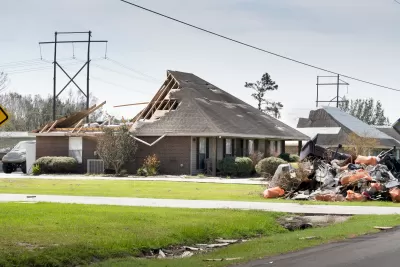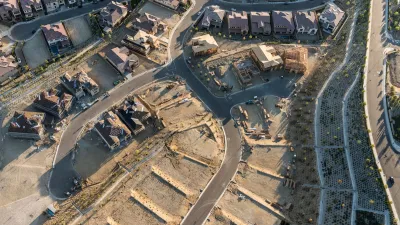As the frequency and severity of weather events increases, building codes need to be adjusted to include resilience principles.

In the face of rising disaster recovery costs and a looming property insurance crisis, Eleanor Kitzman, the founder of Resolute Underwriters, Inc., says it’s necessary to put in place stronger building codes that incorporate proven, affordable climate-resilient standards and dramatically scale up funding and incentives to help retrofit existing homes to be more resilient.
Last year, the U.S. saw the highest number of major disasters, 23 total, since the federal government started keeping records in 1980. In addition to the massive toll on human life and health, as well as the billions of dollars of related property damage and losses, these severe events are driving up insurance premiums and deductibles and leading to reduced coverage or insurance companies moving out of hard-hit areas altogether.
“The percent of uninsured homeowners has risen from 5% to 12% in just the last three years due to increasing costs,” Kitzman writes. “We can only fix this insurance crisis by fixing our underlying risk crisis. The majority of homes in the U.S. were built to codes that did not anticipate the rapidly increasing extreme weather we are experiencing today.”
She admits there is no one-size-fits-all solution, as risk mitigation is peril specific, but she highlights a few programs in the U.S. that are combining creative thinking, innovative funding, and collaborative effort to tackle the challenge:
- Alabama: The Strengthen Alabama Homes program, launched ten years ago, offers homeowners grants of up to $10,000 to install roofs that meets Fortified™ construction standard, with the aim of reducing losses from high winds, hail, tornadoes, hurricanes and other severe convective storms.
- Louisiana: A climate resilience grant from the Louisiana Office of Community Development and Louisiana Homes Corporation supported the development of 35 new homes built to Fortified standards, which were barely scratched when Hurricane Ida made landfall in August 2021, despite catastrophic damage elsewhere along the nearby coast.
North Carolina and South Carolina also have Fortified roof grant programs and last year, and Louisiana created a grant program modeled on Alabama’s SAH program. Kitzman says other states are considering similar programs.
“Stabilizing insurance markets starts with strengthening homes, families and communities. We know what needs to be done, and we need to do it now,” Kitzman says.
FULL STORY: Climate resilient construction helps mitigate disasters

Maui's Vacation Rental Debate Turns Ugly
Verbal attacks, misinformation campaigns and fistfights plague a high-stakes debate to convert thousands of vacation rentals into long-term housing.

Planetizen Federal Action Tracker
A weekly monitor of how Trump’s orders and actions are impacting planners and planning in America.

In Urban Planning, AI Prompting Could be the New Design Thinking
Creativity has long been key to great urban design. What if we see AI as our new creative partner?

King County Supportive Housing Program Offers Hope for Unhoused Residents
The county is taking a ‘Housing First’ approach that prioritizes getting people into housing, then offering wraparound supportive services.

Researchers Use AI to Get Clearer Picture of US Housing
Analysts are using artificial intelligence to supercharge their research by allowing them to comb through data faster. Though these AI tools can be error prone, they save time and housing researchers are optimistic about the future.

Making Shared Micromobility More Inclusive
Cities and shared mobility system operators can do more to include people with disabilities in planning and operations, per a new report.
Urban Design for Planners 1: Software Tools
This six-course series explores essential urban design concepts using open source software and equips planners with the tools they need to participate fully in the urban design process.
Planning for Universal Design
Learn the tools for implementing Universal Design in planning regulations.
planning NEXT
Appalachian Highlands Housing Partners
Mpact (founded as Rail~Volution)
City of Camden Redevelopment Agency
City of Astoria
City of Portland
City of Laramie





























